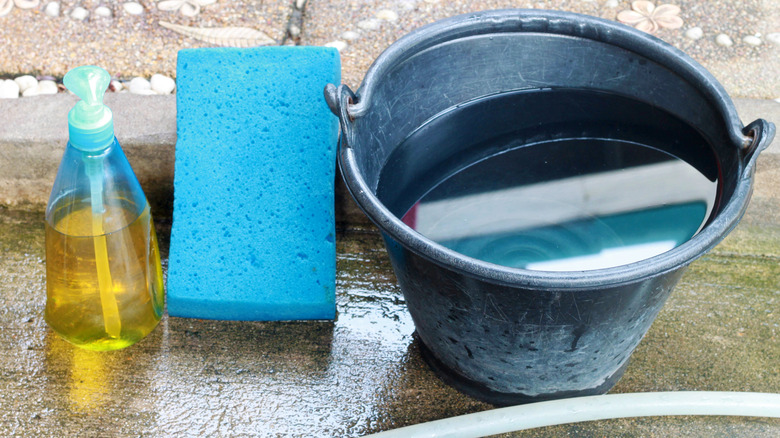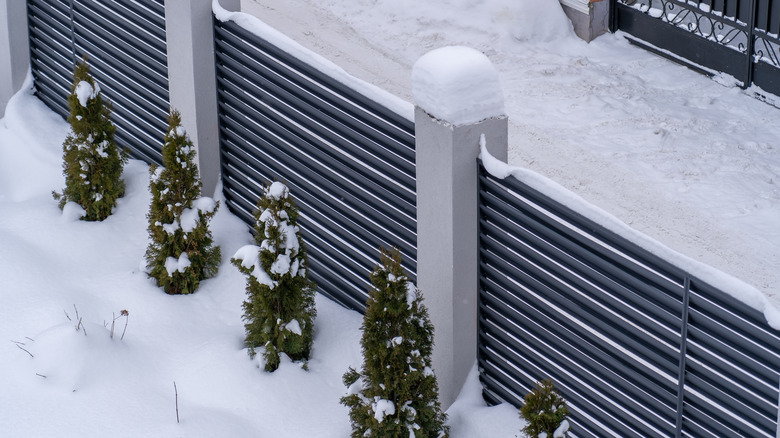Maintenance Tips For Keeping Your Composite Fence In Top Shape
Love the look of a brand-new wood fence but don't want to deal with the maintenance it requires? An alternative to PVC vinyl fencing and wood fencing, a composite fence mimics the look of wood in a lower-maintenance fencing material that's durable and environmentally friendly. It uses a combination of recycled wood fiber and recycled plastic to create a strong, lasting fence that doesn't typically need as much maintenance or repair as wood fences. However, despite its durability, composite fencing still needs some maintenance to keep it in peak condition.
The primary maintenance task for a composite fence is frequently wiping it down with gentle cleaners. Without regular cleaning, your fence starts to look dull and dingy. Protecting the fence from potential damage, such as overgrown vegetation and lawn maintenance tools, is also part of maintenance. Regular inspections help you spot damage early and make minor repairs as part of your upkeep routine before the fence gets worse. Composite is one of the most expensive types of fence materials, so maintaining it well protects that investment.
Keeping your composite fence clean
Dirt, lawn clippings, and other outdoor debris build up over time and degrade a composite fence's appearance. For general cleaning, use your garden hose to remove dirt and debris. While you can use a pressure washer on the lowest setting, this could damage the composite material. Pressure washer use might also void the warranty for coverage on damage caused by the machine. Complete general cleaning at least two times a year.
You may need to spot-clean specific issues, such as clumps of mud or mold. Cleaning those areas when you notice them reduces staining and improves the look of your fence. Dried clumps of mud may come off with a broom or brush. Use caution with tools that could gouge or scratch the fencing. Then, clean off any remaining dirt with a soft-bristled brush dipped in warm, soapy water. You can use composite deck cleaner or mild soap on a composite fence. Avoid bleach, peroxide, and other harsh chemicals, which could damage the finish.
Stubborn stains may need more than soap and water. Before using any cleaning product, check for recommendations from the manufacturer of your fence. It's also a good idea to test any cleaning products on a small area. If the dirt is ground in or you have rust or pigment stains on the fence, try a deck brightener. These products use oxalic or phosphoric acid to help remove staining. If you notice mold growth, use distilled white vinegar with a soft-bristled brush to remove it.
Additional composite fence maintenance tasks
Even though composite fences don't typically need many repairs compared to different types of wooden fences, there could be minor damage occasionally. Inspect your fence at least twice per year to look for any cracks, loose boards, or changes, which could be a sign of an issue. Make necessary repairs, such as tightening screws or fixing cracks, right away to keep them from getting worse.
Another maintenance task is to keep nearby plants under control to prevent unintentional damage. Branches from trees or bushes could scratch the fencing if they blow or brush against the material. Heavy tree branches can also break fence panels if they fall onto the fence during storms. Keeping larger plants a safe distance from the fence reduces the risks. You can also keep the branches trimmed back so they're far enough away to avoid scratching. Vines that cling to the fence or dense vegetation that touches the fence could trap moisture against it, potentially causing damage. Keep a gap between plants and the fence to avoid this issue.
Drainage around the fence is also important to avoid having standing water near the composite material, which could cause warping or staining. Make sure the ground doesn't slope toward the fence, as this could cause water to run toward it and pool at the base. Helping water flow away from the fence is helpful during summer rainstorms and in the winter as snow and ice melt. If you live in a snowy climate, brushing snow off of the fence with a broom reduces weight on the structure to prevent broken, shifted, or bent sections.


